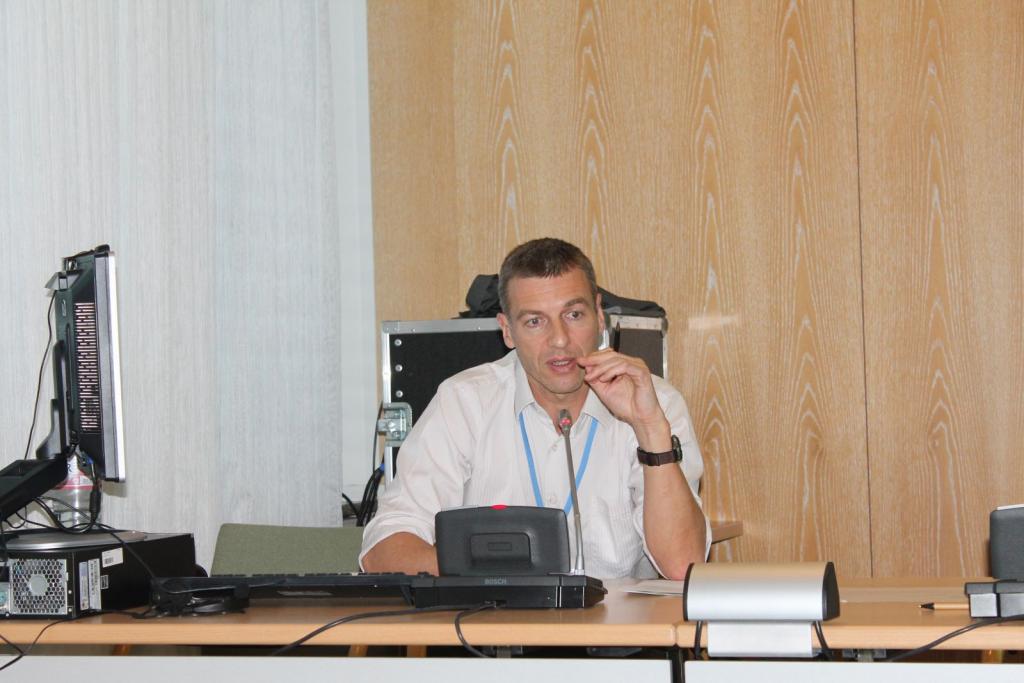Business as usual? Why landscapes matter to private sector stakeholders

Why should private companies care about the landscapes they operate in? Some answers were presented at a SB40 side event hosted by World Agroforestry Centre (ICRAF).
Agricultural landscapes, including forests, are experiencing great environmental stress from the production of agricultural products and commodities – climate change is not exactly improving matters. Public-private partnerships could be a helping hand to sustain landscapes in developing countries.
To present some perspectives on this, the World Agroforestry Centre (ICRAF) hosted a side event “Connecting commodities to landscapes through public-private-civic partnerships” on 6 June during the United Nations Framework Convention on Climate Change (UNFCCC) 40th session of the Subsidiary Bodies (SB40).
The mosaic landscape
A landscape it not just a geo- or biophysical entity, and there are many ways to interpret a landscape and its functionality. This was addressed by Henry Neufeldt, head of the climate change research program of ICRAF, in his opening speech of the event:
In the Social-ecological understanding, the landscape is a mosaic of interacting ecosystems. These can have social, economic or spatial attributions. In the landscape approach, landscapes are understood as having multi functionalities, involving multiple stakeholders in a participatory manner. The landscape functions in different ways for different stakeholders, and this should be taken into account, also to sustain the landscape and its natural resources.
For private companies, e.g. cocoa and coffee producers, the landscape is conventionally a source of input to production to create commodities to sell for profit – a part of the business. But some businesses take more responsibility and try to sustain the landscape, they profit from. They see the benefits of engaging at different landscape scales.

In his introductional speech, Henry neufeldt (Icraf) spoke about the various definitions of landscapes and the landscape approach. Photo: P. høj (CCAFs)
Reducing long-term risks to production
At the side event, Gabrielle Kissinger, Principal of Lexeme Consulting gave some examples of businesses engaging in the landscape approach, examining why they think beyond production.
According to Gabrielle Kissinger, this has something to do with addressing the long-term risks that are posed, when using the landscape the way private companies do. It can be environmental risks, such as the scarcity of water, or more socio-economic risks, such as food security and poverty risks.
For the businesses wanting to address the risks it is according to Gabrielle Kissinger important that they team up with stakeholders facing same risks, e.g. civil society in the area or government stakeholders.
One example is the scarcity of water supplies, as the brewery SABMiller is trying to address in Colombia. This is done in partnership with other stakeholders, such as the NGO Water Fund for Life and Sustainability, the German development agency (GIZ) and others in a private-public partnership.
It is not easy for businesses to choose the landscape approach. The benefits are often obtained years away in the future, the value gained is hard to asses, and the resources to engage are not always at hand. That is why the private-public partnerships is a way to get businesses to engage in the landscape approach, because then government institutions can be the driving force and the expertise from NGO/civil societies can be.
In the second presentation, Miriam van Gool, Program Director from the Sustainable Trade Initiative (IDH) told about the new Sustainable Land & Water Program initiated by IDH.
The goal of the program is to create financially viable governance models for sustainable land and water management. According to Miriam van Gool, every landscape requires specific interventions and specific approaches, which is why IDH has engaged in a six-year program working with six different landscapes around the globe in a multi-stakeholder process for sustainable land use. In the project, the private sector is targeted as a key stakeholder in land use, also to reduce the risks of e.g. deforestation, environmental impacts etc.
The role of smallholders
The panel with representatives from the Food and Agriculture Organization of the United Nations (FAO), the European Commission and the Environmental Investigation Agency were discussing the presentations towards the end of the event.
According to Alexandre Maybeck from FAO, it is important to consider how smallholder farmers manage the landscape they work in – and depend on – and how this smallholder input can be valued by the rest of the supply-chain. It is an example of a way to connect markets and landscapes and create relations between the private sector and the people producing on the ground, the point being that products have value because it comes from a special place. In this sense, a landscape is always a multi-stakeholder entity.
Kate Horner from the Environmental Investigation Agency, who documents threats to forests and their people, backed his point. She also pointed out how many countries do not have adequate legal frameworks to address emerging threats, which make it easier for companies to exploit landscapes with deforestation and land degradation to follow. The public-private-civic partnerships could address this, taking into account smallholder farmers and civil society.
The examples from the side event prove to show one thing, also noted by the panel: the landscape approach is very complex and entails mutable stakeholders and different scales.
Join the discussion
CCAFS will be hosting two side events during the UNFCCC Climate Change Conference in Bonn, 4-15 June 2014 (SBSTA40)
Planning climate adaptation in agriculture: Advances in research, policy and finance- Saturday, June 7, 2014 - 18:30 to 20:00
Advancing Climate-Smart Agriculture in Africa- Sunday, June 8, 2014 - 13:15 to 14:45
Follow updates from SBSTA on our blog and via @cgiarclimate on twitter.
Pernille Høj is a Communications Assistant for CCAFS Coordinating Unit.
